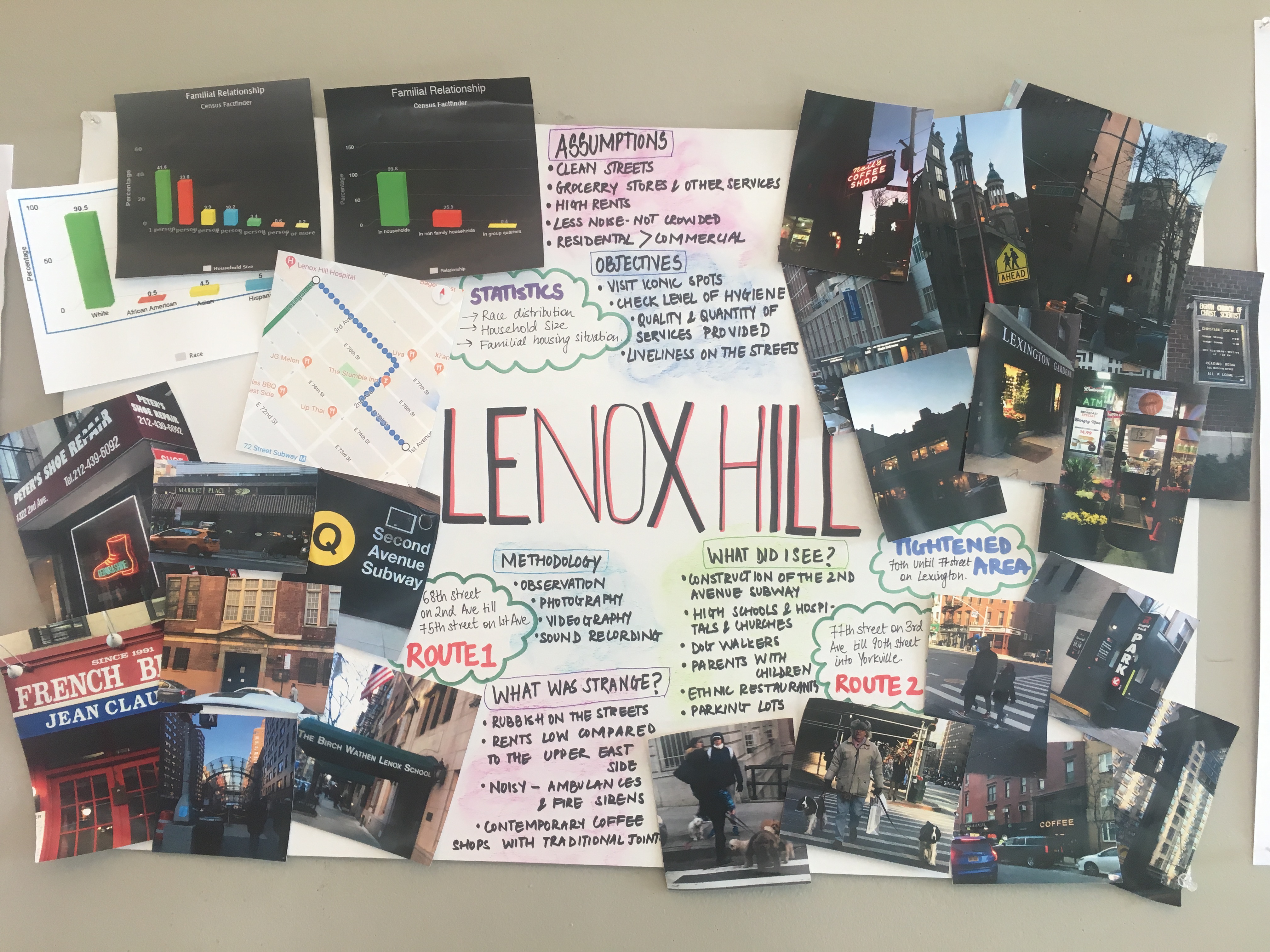Seminar
Lenox Hill, situated by East 60th street until East 77th street between Park Avenue and the East River, is a neighbourhood full of dichotomies. Across Neil’s Coffee Shop’s contemporary neon sign you can spot a row of retro styled barber chairs and hair salons. As the neatly groomed trees create a canopy through the wide streets, a line of large black trash bags can be seen lined up along the sidewalk. On a Thursday evening as you walk on the lively yet quiet streets of this neighbourhood you’ll soon come to find the construction of the 2nd Avenue subway. Construction that has lowered the rental rates of this elite residential area thus causing a major economic setback. However, even with all its pluses and minuses this neighbourhood could easily be any little girls “dream neighbourhood”.
The streets instantly make you feel safe and secure. This gave me the impression of a close knit community that trusts their neighbours and feels protected in their own homes. This deduction seemed apt since Lenox Hill is a part of the prestigious Upper East Side. Upon my multiple visits I chose to find out the familial housing situation, the distribution of race and lastly the size of an average household. According to the Census Fact finder the largest proportion of the residents are White almost 91%, followed by Asians at 4.5%. Surprisingly, the largest household size is only 3 people per household. As assumed, 99.6% of the residents live in family households and the remaining in either group quarters or non family households. This statistical data explains the abundance of schools, hospitals, grocery stores and other services provided in the area. For the number of dog owners and parents walking their toddlers to kindergarten, it was strange to not have seen large green open spaces or child friendly recreational spots.
As you get off the 68th street Subway, NYSID and Hunter College along with Church of St. Vincent Ferrer envelope you from all sides. The church lies a few street south of the station and gives an ode to the Dominicans and their provincial headquarters. Lenox Hill has had some controversial history regarding it’s churches. The St. John the Evangelist Roman Catholic Church replaced a 100-year-old parish church in 1999. Some took the demolition bitterly and resented the change. Maria Maag of Center Moriches, a former parishioner left the parish after the old church was demolished. Thus besides the neighbourhood’s fancy boutiques, art galleries and five-star hotels it also has a rich history and a plethora of places for religious worship.
Bibliography
https://www.nytimes.com/search/Robert%20Lenox
https://digitalcollections.nypl.org/items/510d47e2-d684-a3d9-e040-e00a18064a99
http://maps.nyc.gov/census/
Studio
Reflection
Firstly, I got to take a look at my neighbourhood from a step back and get a holistic perspective on the social, political, environmental and cultural aspects of the space. Finding out the reasons of many phenomenas as well concluding inferences was the result of my Bridge 2. Since my visits were so personal I chose to present my poster in the form of a collage or scrap book. However in order for the viewer to understand it too, I wrote subheadings next to the clusters of images such as ‘Route 1,2 and 3’ or ‘Tightened Area’. For the rest of the text such as my assumptions, objectives, statistics, methodology, what I saw and what was strange, I wrote in the form of mind mapping. I summarized my observations by listing the characteristics of the neighbourhood that I thought were surprising.
In terms of the statistics I chose to research about the types of household (family, non family, or group quarters) as well as the size of the household (1,2,3,4,5,6,7 or more people). The reason for this was because Lenox Hill is known to be a family and child friendly neighbourhood. This was proved correct as I observed a number of dog owners as well as toddlers walking back from school with their parents. Lastly I researched about the distribution of race as upon my visit I noticed a large majority of White people and rarely any Asians of African Americans.


